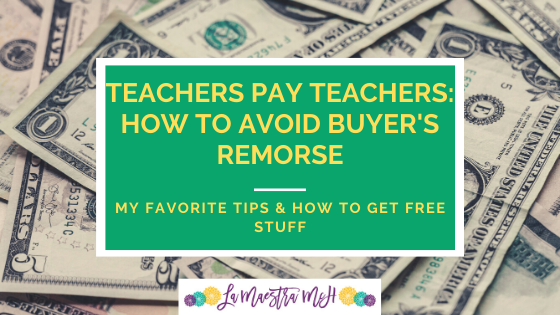Movement in the Classroom: 9 Easy Ways With Little or No Prep
Since 2015 I’ve taught high schoolers 90 minute classes in a small trailer. Believe me when I say, movement is a necessity. It was one of the first things I realized transitioning from teaching 50 minute classes to block scheduling. You probably already know there are many benefits to movement in the classroom but sometimes I think we over complicate movement ideas. They don’t have to be cutesy, pre-planned, or complicated. Here are 9 ways to easily incorporate movement in the classroom that I do with my high schoolers.
1. Group Work
I do a lot of group work. I don’t mean big group projects. I mean partner up and do this short activity, read this paragraph, compare your answers. Sometimes I put students in groups just because I can tell they are getting squirrely and need to get up and move. A quick way to do this is to use popsicle sticks or something similar with students names. I use index cards (a traumatic splinter incident during student teaching turned me off of popsicle sticks forever). Flip through those cards, read the names and tell students to move and compare answers for 1 minute then go back to their seats. Want to really make the students feel special? Let THEM pick the cards! They’re up, they’re moving, they’re talking, it took zero prep.


2. Two Lines Compare/Talk/Ask/Practice
You can partner students and draw out the movement time. Let’s say I have 20 students. I draw 10 names and tell them to form a line. The remaining students stand across from someone, anyone. They discuss a question, share a response, whatever the task is. Then tell one line to move two people to the right (I do this in TL). New partner, same task. Tell the other line to move 2 people to the right. New people, same task. You can have every other partnership trade places across the line so now there are new people in the lines and students have a chance to work with more people. Rather than sit and review a worksheet or discuss a paragraph, students can do it standing. Again, zero prep for lots of movement in the classroom.
3. Scavenger Hunts & Puzzles
I’ve done a longer post here about scavenger hunts and puzzles. I love them. It’s one of my favorite ways to get movement in my classroom. My students moan that they’ll have to walk a lot but they secretly love it and we jam out to music during the activity. You can do scavenger hunts with ANYTHING.


4. Activities Around the Room
You do not have to reinvent the wheel to have movement in the classroom. I repeat, do not work harder than you need to. Take a worksheet, or paper activity and cut it up. Seriously, cut it into sections and hang them around the room. You can color code them or shape code them (I’ve had A LOT of color blind students, including one that only saw black/white), and assign students to a certain color/shape. This way you don’t have students all crowded around one sheet and you don’t need to make a brand new activity to spread out the students. They walk around and do the activity on their own paper or mini-white boards, just like they would on paper sitting. Very little prep, lots of movement.
5. Have Students Help You Prep!
When I need to hang papers around the room for scavenger hunts or activities around the room. I have the kids do it! I hand out whatever needs to be hung, have them go to one of three tape dispensers and then hang the materials up for me! I have Spanish 2 hang things for Spanish 1 and vice versa. Sometimes they hang things for their own activities! Boom! Double movement in the classroom! Pro-tips: Show students how much tape to use and give them guidance about where to hang things (Which walls? Close together or spread out? Are there off limits areas? Up high or eye level?)
6. Do Your Activities Standing Up
Seriously, just make the kids stand up. I teach the song “Head, Shoulder, Knees, and Toes” when we do the body unit. I also have actions for irregular tú commands and always make the kids stand to do them. Do they really need to stand? No. Can they? You betcha! There’s no reason not to! You can stand while reviewing a worksheet, you can stand while asking review questions. You can stand during a game of Pictionary or Charades or while reading a story or watching a video. Just tell the kids to stand up. They will grumble but it’s for their own good. How much more zero prep does classroom movement get than that?
7. Quizlet Live
If you haven’t tried Quizlet Live, you’re missing out. It’s a great filler activity and a great on-the-fly movement activity. My students get up and move to their groups and 99% of the students stand the entire time. Quizlet Live relay style is another great way to get more movement in the classroom out of Quizlet Live and a fun twist to keep the Quizet Live from getting stale. Need more Quizlet ideas? Check out this post for 12 ways I use Quizlet beyond a basic vocab list.
8. Brain Breaks
If you aren’t familiar with brain breaks, they are short (1-2 minute) activities that give students a break and a chance to move. I’m not going to describe any here. Instead I’m going to point you to Annabelle Allen aka La Maestra Loca. She is fun, spunky, energetic and known for her brain breaks. Here’s a link to all of her posts with that tag. I’d be shocked if you didn’t find a new way to incorporate movement in the classroom from this list!
9. How Much do You Want to Move?
Head to Twitter and search #baileviernes (Dance Fridays). That’s all I’m gonna say. 🙂 Admittedly, this one requires a little prep, a Google search a day or two ahead of time. I haven’t done this one yet. Perhaps this coming year…keep an eye on my Twitter and Instagram to see!
I hope you’ve been inspired by these easy, little to no prep ideas to incorporate movement in the classroom. Remember, it doesn’t have to be a big, complicated thing. Keep it simple and keep them moving.



Great tips! It’s tough to get kids up and moving, which they need, without chaos as an end result. I love the idea of scavenger hunts and puzzles.
As a drama teacher, I have seen the wonderful effects of movement whe it is consistency used in a classroom. Good for you!